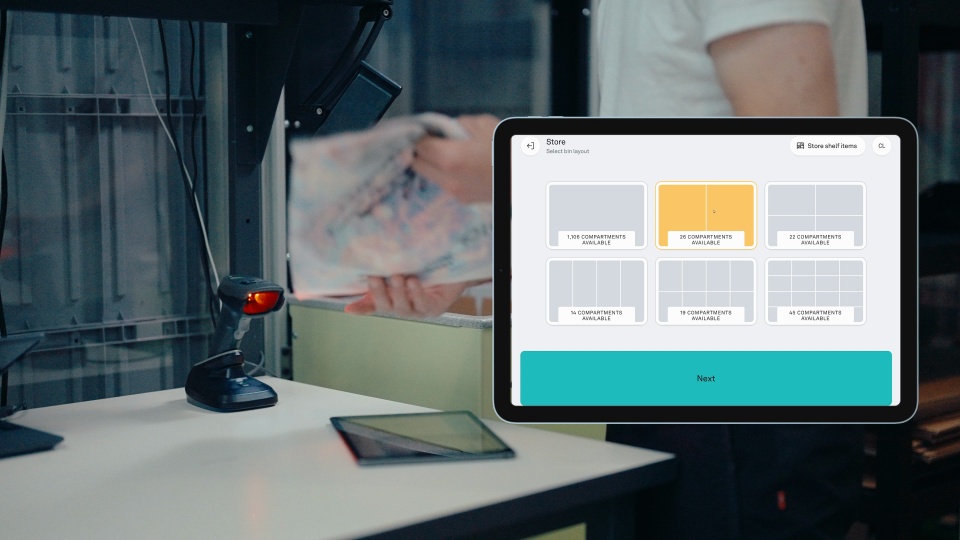Typically consisting of an eight-digit alphanumeric code printed on a tag or label, SKU numbers are now the industry standard for detailing key product characteristics and information such as the retailer’s set price. Across your entire supply chain, SKU numbers provide accurate product insights that previously had to be tracked manually.
Even though SKU numbers work similarly to barcodes, the biggest difference between the two is that barcodes are usually assigned to products to track sales. In contrast, SKU numbers serve as a more unique identifier for internal inventory.
With the 80/20 ‘Inventory Management Rule’ now taking center stage, SKU numbers are playing an even more important role in your eCommerce operations. Want to find out why? We’re here with all the details.
What Is The 80/20 Inventory Rule?
The 80/20 rule (or ‘Pareto principle’ as it’s also known) states that for many outcomes, around “80% of consequences come from 20% of cause”. Simply put, this means that 20% of your business activities will account for 80% of your results.
When applied to inventory, this rule suggests that businesses earn approximately 80% of their profit from just 20% of their products. With the right systems in place, optimizing this 20% of stock as much as possible is a direct line to improved margins and more effective workflows.
This is where SKU numbers come in — the best way to optimize your inventory and showcase your higher-margin products is to know exactly which products are performing best for your business.
What Are The Benefits Of Pareto Principle To Ecommerce Brands?
As an ecommerce professional following the 80/20 rule, finding your ‘golden 20%’ can be hugely beneficial. If you can determine which 20% of your resources are producing 80% of your results, it becomes possible to invest more time, energy, and money into the right areas of your inventory.
While the ratio doesn’t have to be exact, the general idea of the 80/20 rule is to ensure that your business is targeting optimal growth areas and producing results that strategically drive your business forward.
Just some of the benefits of successfully using the 80/20 rule include:
- Improved forecasting
- Increased profitability/ use of investment
- More stable growth
- Clarity on your organizational structure
How To Find Your ‘Golden 20%’ Of Pareto Principle
Research has shown that despite ratios not always being exactly 80/20, the Pareto principle is generally accurate. The question is, how can you find out which of your business activities are providing the best results?
With the pace across fashion retail and eCommerce quickening, aligning with Pareto principle requires better precision across all of your business activities. Just some ways to achieve this include:
Ensuring Your Insights Are Accurate
You can only truly understand your business if you have the right systems to track its success. While most business owners and upper management would like to believe that their processes are optimized to their full potential, details can still slip through the cracks.
Whether it’s from human error or ineffective supply chain management, the benefits of the 80/20 rule can only be felt if you’re tracking the following areas with complete precision:
- Which locations/regions are your top sales coming from?
- What are your top product categories?
- What are your top channels for sales?
- What technology is working best in promoting your sales?
Once you can confidently say that the data connected to these areas is fully accurate, your 20% will be in plain sight.
Allowing SKU Numbers To Lead Your Distribution
With SKU numbers taking the lead on how your products are tracked and measured, you can be sure that the data and insights collected by your business are conclusive. With SKU numbers, it becomes easier to detect which products need to be restocked and gather immediate insights into how your products move.
With the right measures in place, when a customer purchases an item, and the SKU is scanned, the item can be immediately removed from the inventory. This can happen while also recording data relating to the selling price, the location of the item, and much more.
Investigating New Ways To Manage Your Order Fulfillment Process
Even though the eCommerce market is thriving, competition is stiff. This is why finding new ways to stay competitive is essential. For the 80/20 rule to really work for your business, it’s important to stay on top of new opportunities and adapt your business to suit an ever-changing landscape.
The biggest issue with the 80/20 rule is that what’s working for your business today, might not be what works tomorrow. This is why ensuring your business is as flexible as possible is the best way to ensure you remain in complete control of your operations.
Technology is thriving, it might be time to compare how your 20% can reach its full potential with a little help from automation.
How Pio’s Automated Warehouse System Can Help
At Pio, we want to help you leverage the 80/20 rule as much as possible by freeing up valuable time for you to focus on the profitability and efficiency of your eCommerce business.
This is why we’ve developed an automated warehouse system that enables brands to create smoother and smarter warehouse fulfillment processes. Pio can be tailored to your exact business needs, helping you apply the Pareto principle more easily.
As an automated warehouse system, we use your SKU numbers to monitor and manage your inventory robotically. With better storage capacity and a design that can be fully optimized to suit your business operations, Pio helps you pinpoint what’s working for your business and what’s not.
At Pio, we even utilize the 80/20 rule ourselves, using it to determine how many robots your system will require. The moves we make might be automated — but they’re always calculated down to the finest detail.
Wondering about other benefits? For more answers, watch our informational video. You can also book a demo of our warehouse system and find out exactly what Pio could mean for you. Because Pio is built with the future in mind. And as your business grows, Pio grows with it.





.jpg?width=600&name=Beauty-Welness-Pio-04743%20(1).jpg)